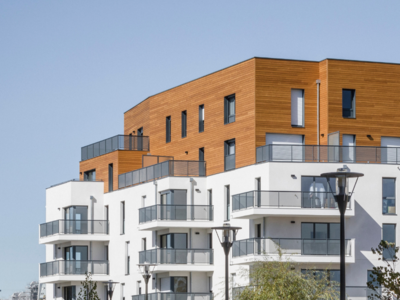Biobased materials such as wood offer many advantages for the construction of buildings and individual homes. Here are the main advantages of using biobased materials:
Biobased materials for high thermal and humidity performance in buildings
Thanks to their porous and hygroscopic nature, biobased materials effectively regulate variations in temperature and humidity inside buildings. Biobased materials are more stable and offer excellent acoustic properties over time compared with synthetic materials.
Biosourced materials for healthy comfort in summer and winter
Because of their natural origin (plant or animal), bio-sourced materials offer high air quality inside buildings. Biosourced walls delay heat transfer and regulate the interior of buildings. The use of biobased materials also considerably reduces emissions of volatile organic compounds, and some even have pollution-removing properties!
Biobased materials that meet quality standards for construction materials
The vast majority of bio-sourced materials have technical opinions, certifications such as Acermi and, in some cases, an environmental and health declaration sheet (EHSDS) analysing the product's life cycle.
Renewable and recyclable bio-based materials for the circular economy
Derived from plant or animal biomass, biobased materials are made from so-called renewable raw materials. Some materials, such as cellulose wadding, are even derived from recycling. Because of their properties, biobased materials require very little energy to manufacture and store carbon throughout their lifetime. Biobased materials offer all the advantages needed to meet the challenges of the circular economy: saving resources upstream of the construction process, favouring resources that emit the least greenhouse gases and emissions into the atmosphere, reusing and recycling materials downstream of the construction cycle to extend the life of the materials and their use over time.
Biobased materials to reduce the carbon footprint of the construction industry
Using biobased materials in construction helps to reduce the carbon footprint of buildings. Biobased materials require less energy to manufacture than conventional materials. What's more, most biobased materials are derived from plant biomass, which means that they capture CO2 from the atmosphere and store it throughout the building's lifetime.









